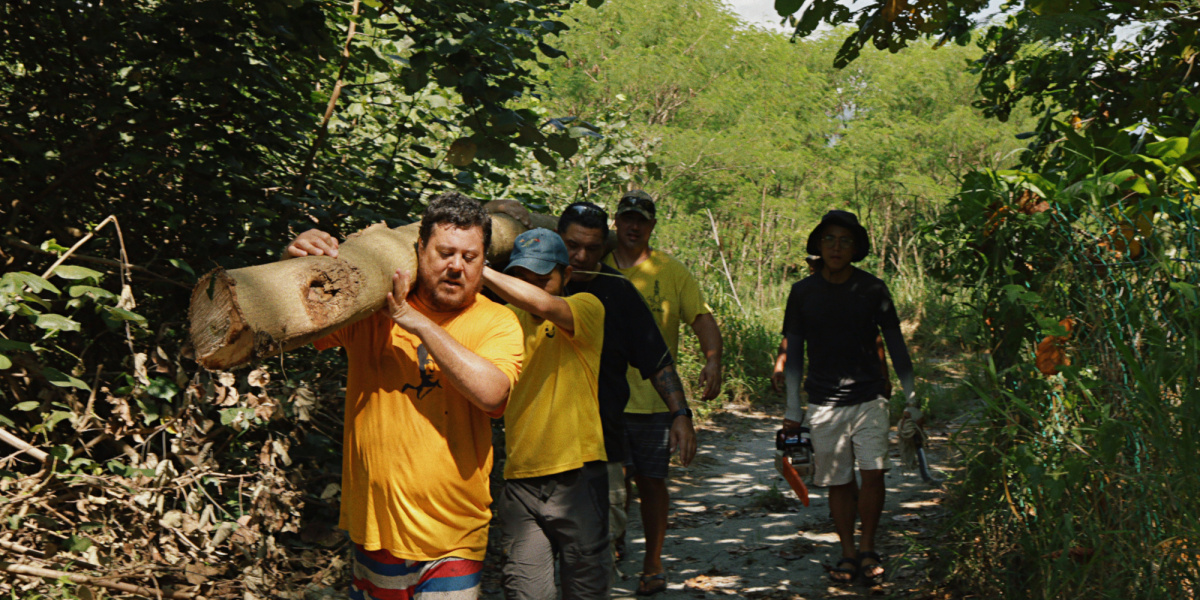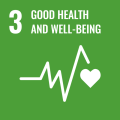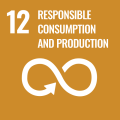From Forest to Ocean – Promoting Outrigger Canoes and Maritime Culture
Why handcraft boats in an era of technology? Yvonne Chiang, who passionately dreams of reviving maritime culture, explains, “Imagine a day when the Tao people of Orchid Island no longer make their traditional boats, or when farmers stop planting and all we have left are neatly packaged, ‘nutritionally balanced’ products. What kind of cultural heritage would we leave to the next generation?” This maritime heritage dates back over 4,000 years to Taiwan’s prehistoric inhabitants. With exceptional seafaring skills, they frequently travelled between nearby islands, spreading Austronesian languages. Taiwan, therefore, became the cradle of the Austronesian language family.
In 2020, Yvonne, who had lived abroad for many years, brought her experience with outrigger canoes from Hawaiʻi to Taitung. Although widely used by the Austronesian peoples across the Pacific, it was still largely unknown in Taiwan. In 2022, she founded the Taiwan Outrigger Canoe Club (TOCC) and the Taiwan Outrigger Canoe Voyaging Society (TOCVS), both based in Taitung. TOCC focuses on community visits, races, and island-hopping activities, while TOCVS fosters international cooperation to learn and pass on traditional boatbuilding and navigation techniques among Austronesian communities.
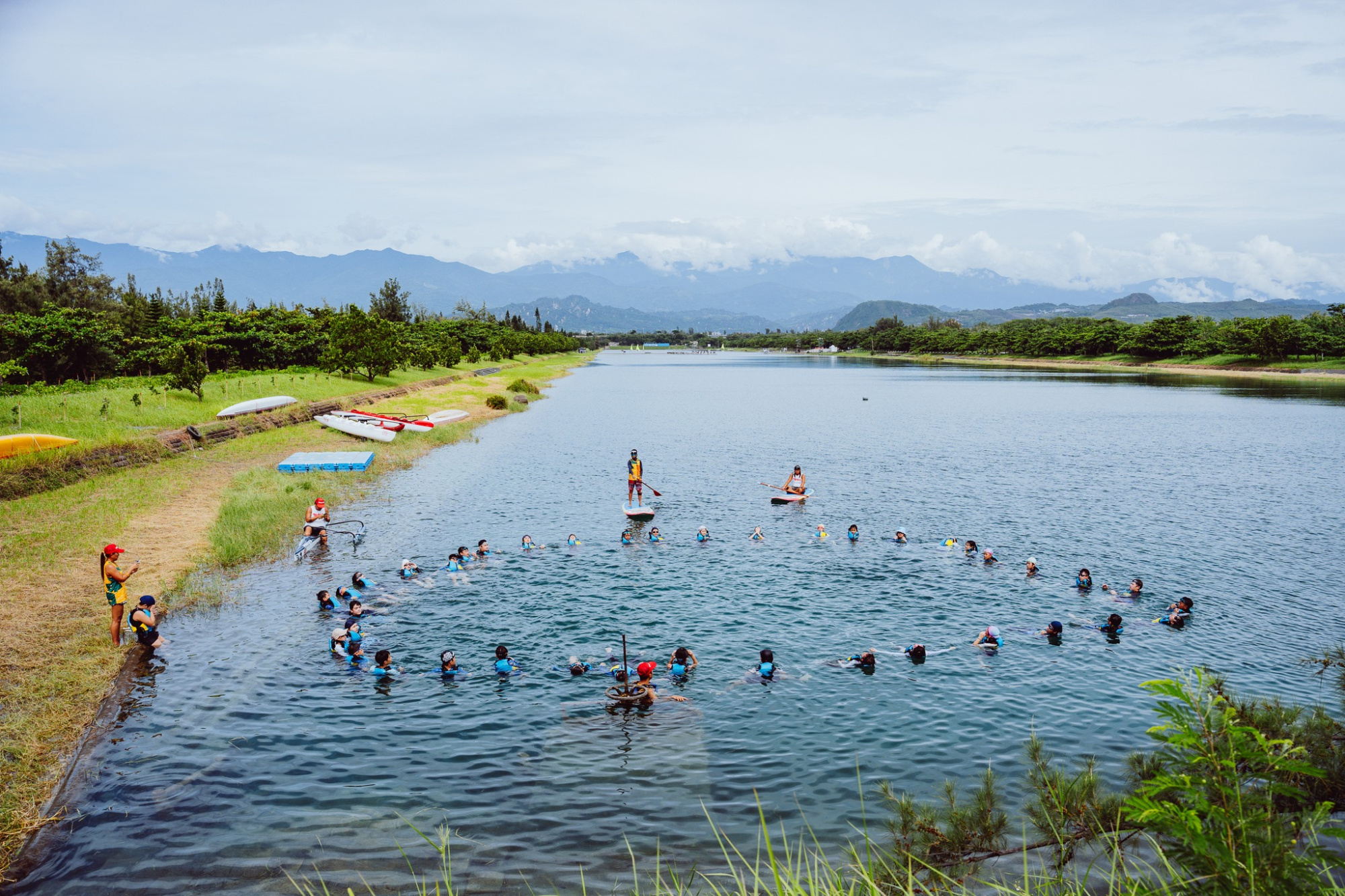
Photography | Chen Chian
This year, they attempted to cross to Green Island and invited canoe craftsmen from Hawaiʻi and New Zealand’s Māori community to lead a boatbuilding project at the Kids’ Bookhouse in Taitung. TOCC coaches also collaborated with Junyi School of Innovation’s introductory outrigger canoe course. Inspired by a century-long vision rooted in culture, members of the association strive to make the outrigger canoe a “mother ship” for children seeking their roots.
Setting Sail from Untouched Waters
At 3:30 a.m. on May 26, 2024, 25 paddlers from 11 countries gathered on Taiwan’s East Coast to embark on the first outrigger canoe crossing from Taitung to Green Island.
Though not a race, the event attracted several international paddlers. This crossing occurred in uncharted waters between the main island of Taiwan and Green Island, where the summer Kuroshio Current, flowing from the North Equatorial Current, presents challenges. Outward paddlers may face head currents, while returning paddlers enjoy downstream flow, a unique highlight of the attempt. “Taiwan has world-class ocean conditions, yet so few people know this,” Yvonne said. The crossing also symbolizes retracing ancestral footsteps. Every paddle between islands feels like a search for ancestral wisdom and secrets.
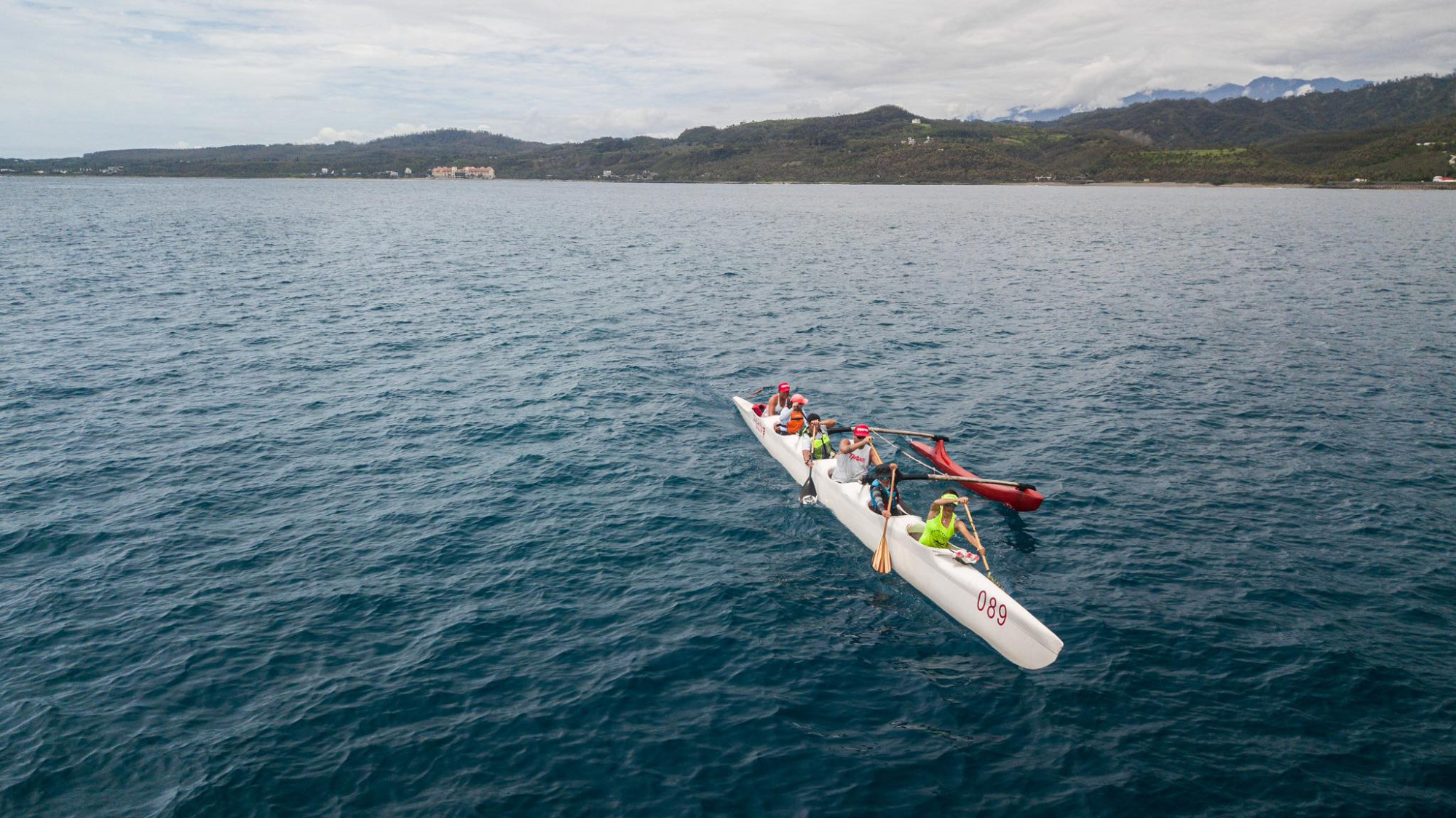
Thousands of years ago, Austronesian ancestors were master seafarers.
They charted stars and tides, braved headwinds and tailwinds, hunted on mountains, and fished in the seas.
On these islands and waters,
Their descendants now stand on the same beaches, counting stars and tides, feeling the wind on their faces.
Could we also paddle out to sea?
Retrace the historical routes of our ancestors?
At 4 a.m., Kimokeo Kapahulehua (Uncle K) from Hawaiʻi’s Kimokeo Foundation, a champion of maritime culture, blessed the paddlers online. Among them were six professionals who had participated in the Molokaʻi Hoe (Note 1). With reverence and blessings for safety, the team set out in two six-person canoes and two escort boats (Note 2) at 5 a.m., departing from Fugang Fishing Harbor and Shanyuan Bay.
“This was our first attempt at such a challenge. Although we knew the Kuroshio existed, we didn’t expect its current to be so strong!” Yvonne recalled. While most crossings begin from Green Island with downstream flow, they reversed the route, departing from Taitung beach testing the head current. During breaks to switch paddlers, they discovered the current had already drifted them off course. “The best part was the calmness of these seasoned paddlers.”
Preparation Turns Risk into Routine
Aside from the Kuroshio, the paddlers faced an unexpected front and stronger currents near Green Island. Safety Manager Ray Wang decisively called for an immediate return. Despite not landing, Yvonne felt no disappointment, “This was our first crossing attempt. Safety and learning are what matter most. We plan to try again in different months to collect data on weather, tides, and sea conditions.”
For Yvonne, long-distance crossings mirror the Austronesian peoples’ historic sea migrations, a cultural tradition now revived through modern events. “Globally, outrigger canoeing involves extensive preparation and planning. If you’re unprepared, it’s risky. But with training and planning, crossings can become part of daily life, a way to refine oceanic skills.” Just as hikers challenge mountains, paddlers take on the sea, strengthening both body and spirit. Yvonne envisions such events becoming routine, showcasing Taiwan’s oceanic resources and sports to the world and boosting coastal city planning, maritime education, and related industries.
Expanding Outrigger Canoe Education
“Many Taitung teachers are indigenous and hope to provide cultural resources and heritage for their students,” Yvonne explained. In August, TOCC partnered with the Kids’ Bookhouse organization to host a 10-day boatbuilding camp. Learning maritime knowledge started with understanding forests. The team secured logging permits from the Forestry and Nature Conservation Agency and invited boatbuilders Kuang-Te Huang (Si Rojiang) from Dongqing Village on Orchid Island, two boatbuilders from the Alika Bumatay boatbuilding family in Hawaiʻi, and Māori boatbuilder and navigator James Eruera.
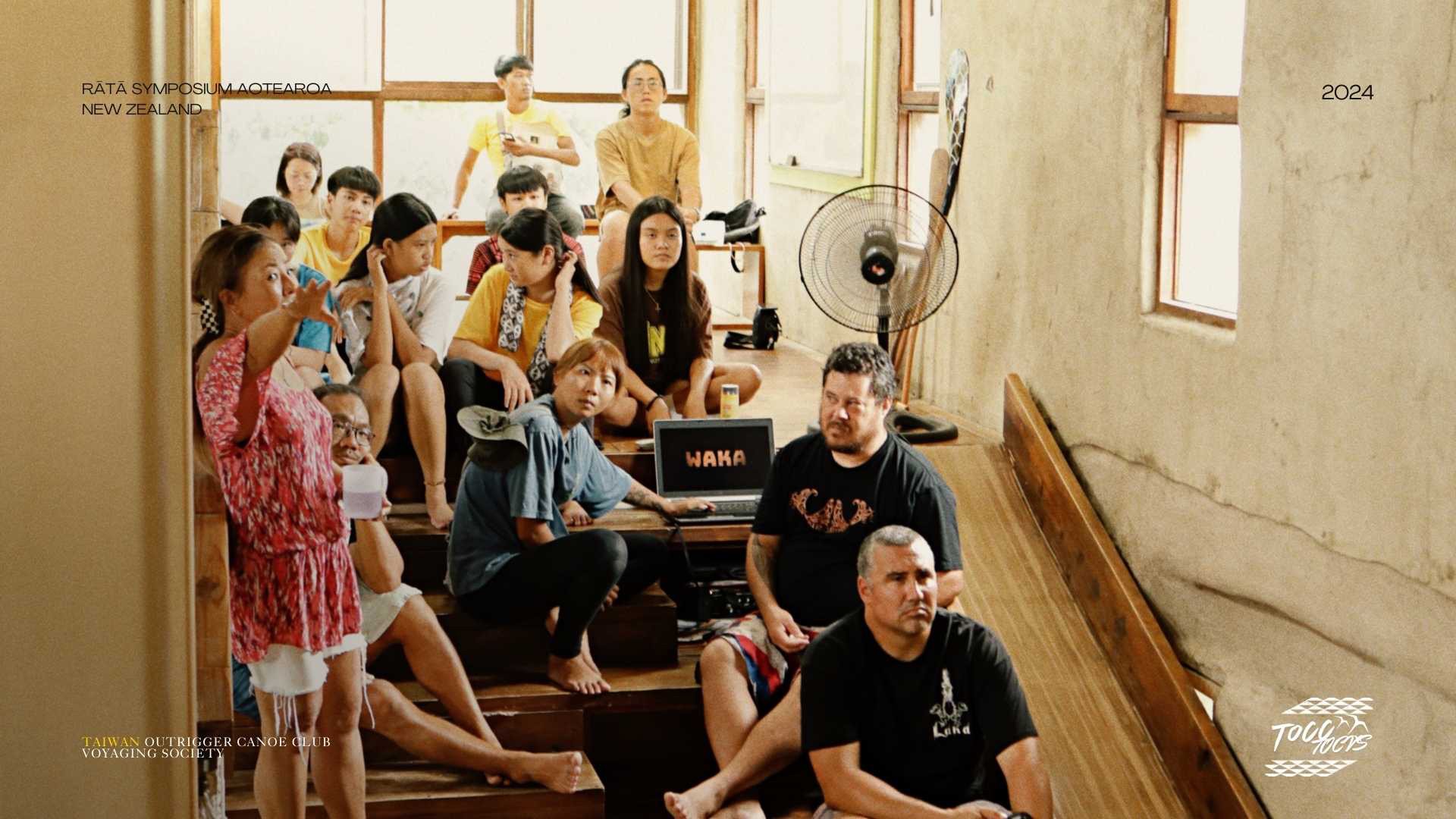
Initially, Yvonne aimed to complete a boat within a timeframe, specifying its capacity and shape. The boatbuilders replied, “We don’t know what kind of boat we’ll carve or how it will turn out.”
What Kind of Boat Will Nature Give You?
In the forest, craftsmen examined the trees, analyzing which parts suited the hull, noting that shaded, wind-sheltered wood retained more moisture and was ideal for the boat’s bottom. “They see things we can’t,” Yvonne remarked. The process revealed that boat shape and purpose emerge from the natural materials, turning boatbuilding into a dialogue with nature.
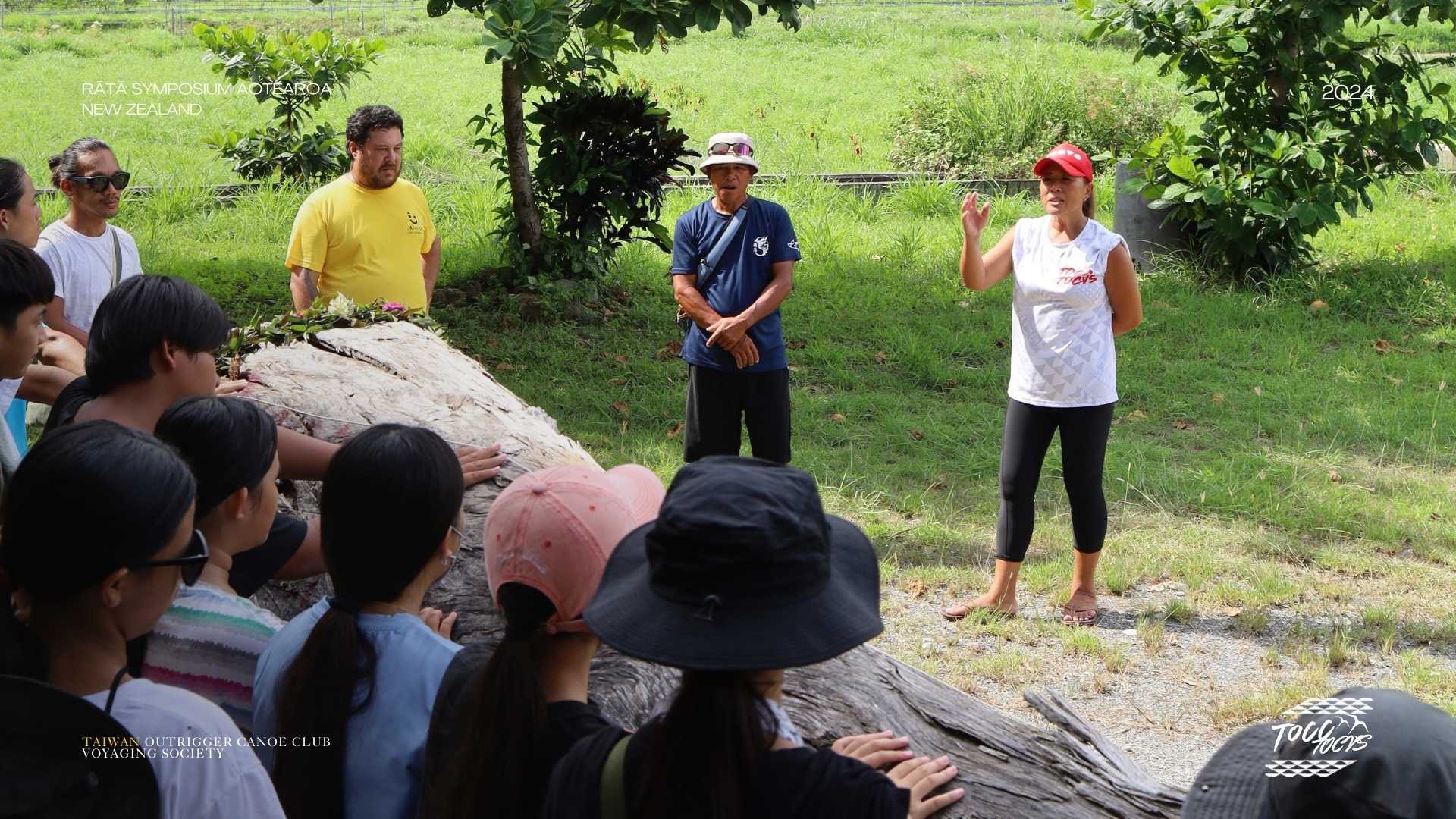
They selected two pieces of beech wood, one 8.5 meters long and the other 6.5 meters long, and three pieces of sea hibiscus wood for the outriggers (ama) and connecting beams (iakos). Since forest humidity differs from lower altitudes, the wood must be harvested at the right time, stored for at least six months, and then processed. The boat is expected to take a year to complete.
Respect the wood, it’s not just a tool, it’s family, a legacy, if you know the boat will exist 100 years from now, how will you care for it.
Alika always says, “You will have the canoe as long as you take care of it.”
From a whole piece of wood to carving out a boat, there is an immense amount of knowledge involved. Even the technique of binding the boat is closely related to the wind direction, and one can even identify the characteristics of the sea where the boat is suited to navigate. From stripping the bark to small rituals, craftsmen from Orchid Island, Hawaiʻi, and the Māori, along with children and elders from the Beinan and Amis tribes, all enthusiastically shared their cultural practices. After a few days, the children gained a deeper understanding of respecting diversity, honouring trees, and appreciating craftsmanship. It also inspired them to explore, “What other aspects of my culture can I share?”
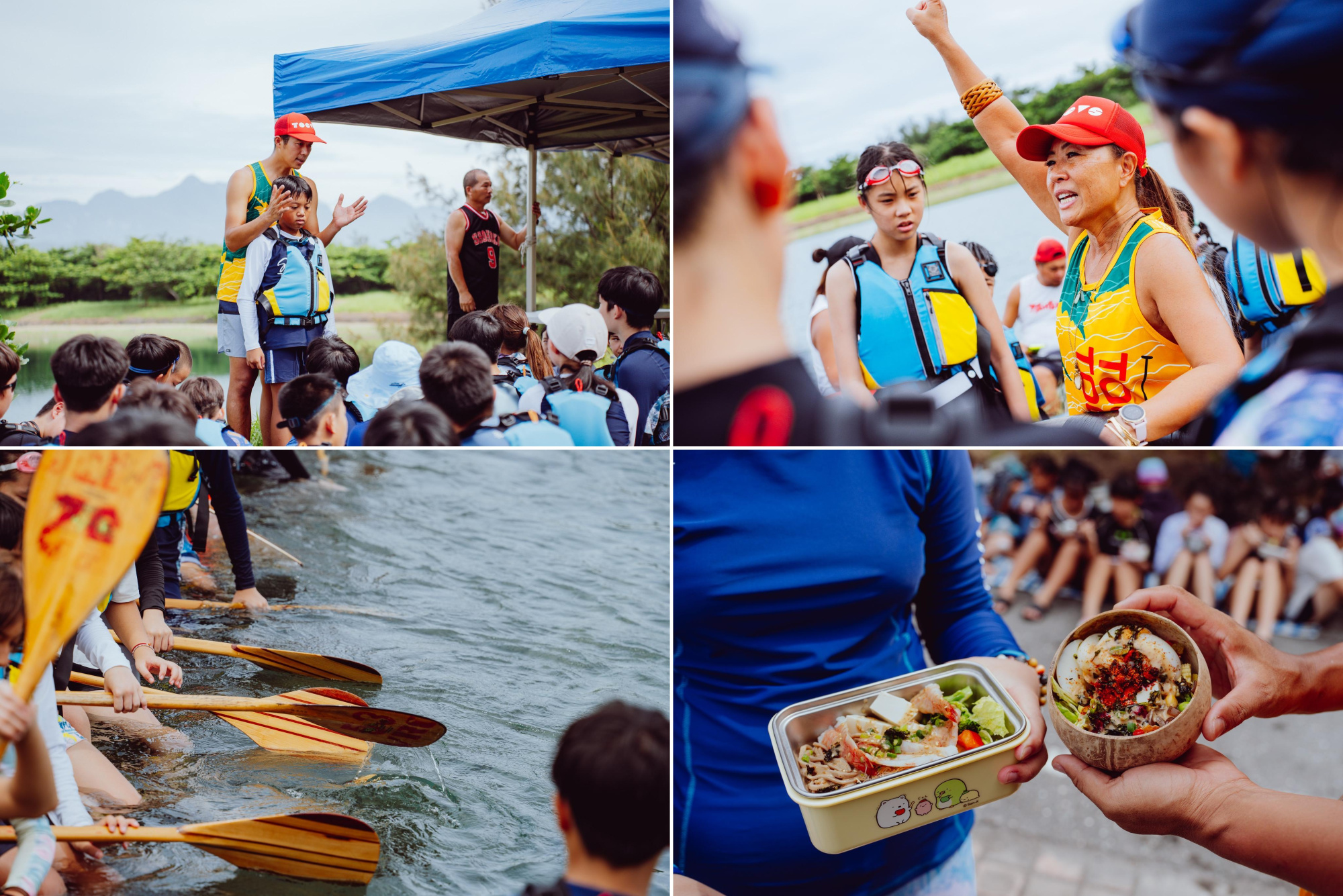
Photography | Chen Chian
Outrigger Canoes: Connecting Taiwan’s Maritime Culture
Teacher Scott Huang, head of Junyi School’s Outdoor Education program, previously designed the boatbuilding course centered around Greenlandic kayaks. One student once asked him, “Why are we making this type of boat?” He laughed and said it might simply be because of the resources available at the time. It was only after meeting Yvonne in 2021 that he truly realized, “From the perspective of the Austronesian homeland, the outrigger canoe has a much closer cultural connection to us.”
In September 2023, he and Junyi School teachers Shine Juang and Rahic Sra joined TOCC’s Taitung Austronesian team to compete in Hawaiʻi’s Queen Liliʻuokalani Canoe Race. Witnessing Hawaiʻi’s deep respect for the ocean, where beaches were clean and locals prioritized sustainability, he asked, “How do we teach the next generation to love the ocean?” Their answer, “Visit the sea often, engage in water activities, and you’ll care about its future.”
Inspired by this, Teacher Scott incorporated outrigger canoe experiences into ocean courses, along with lessons on Austronesian culture, astronomy, and physics. In addition, in late August this year, the school responded to the Ocean Affairs Council’s call to revitalize maritime cultural strength. Teacher Scott collaborated with Teacher Shine, who specializes in architecture, physics, and mathematics, to organize the Junyi Frame Canoe Construction Project. Students began by making boat models, integrating disciplines such as hull structure and naval mechanics, and combined the project with hands-on work at the Xiangyang Carpentry Workshop in Taimali.
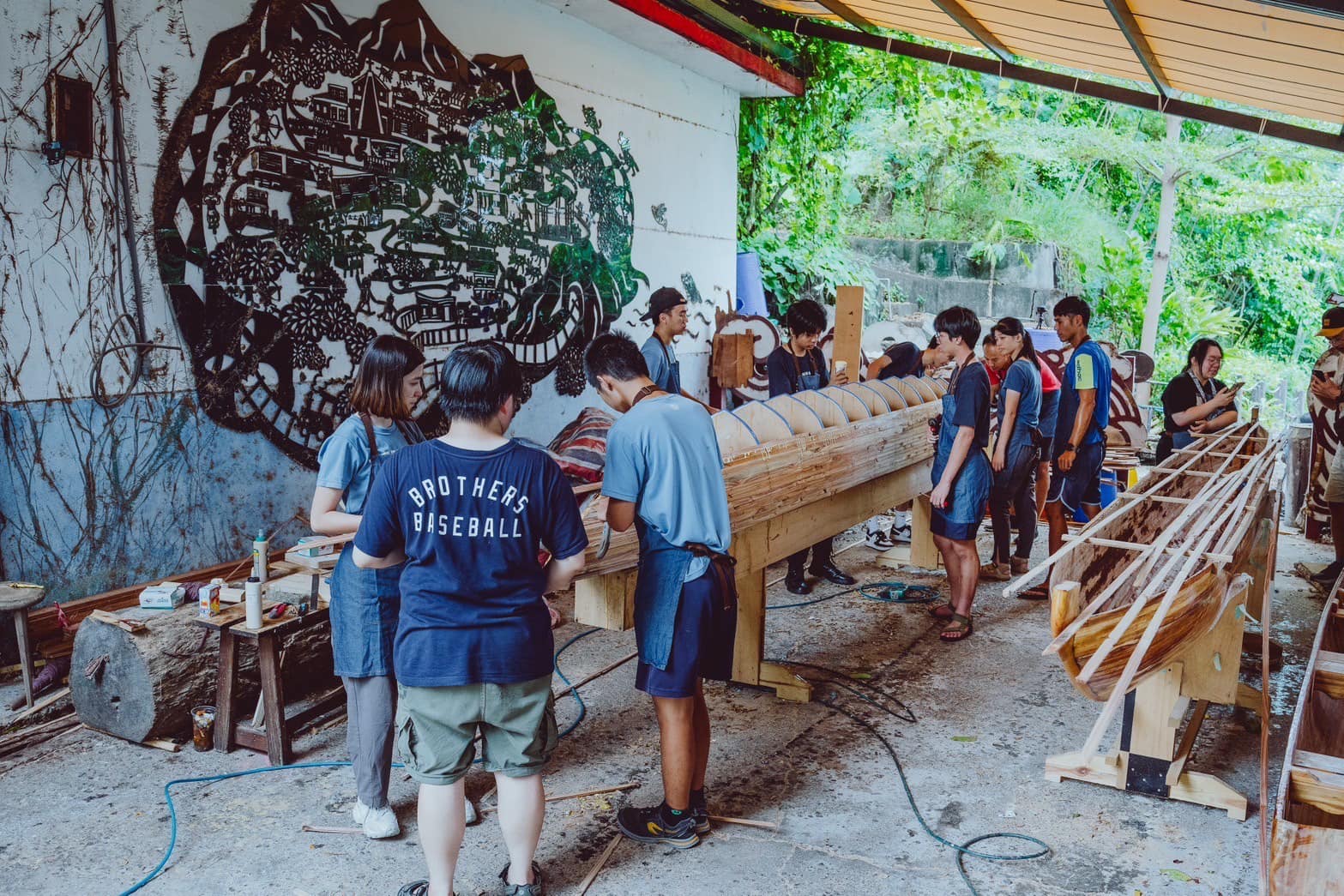
“In this era of constant innovation, tools are often easily replaced, but when it comes to relationships, they become a cultural imprint.” – Yvonne Chiang
Yvonne’s words express the significance of building a boat by hand, and what Teacher Scott learned from her and Uncle K is that they truly hope to bring the oceanic culture back to Taiwan. In this vision, a powerful drive has given Teacher Scott a sense of mission, but also a feeling of concern. When the Hōkūleʻa sails through Taiwan in 2027, will our children have the knowledge and skills necessary to communicate with the Hōkūleʻa team at sea, instead of just welcoming them on shore?
As the origin of the Austronesian languages, Taiwan, as part of the educational landscape, should be committed to cultivating the next generation’s maritime knowledge. Allowing children to participate in this grand historical moment, continuing the oceanic wisdom and spirit of the Austronesian ancestors, they will remember a summer when a group of older brothers and sisters, who shared the same linguistic roots, arrived from afar. The scent of the ocean solidified in their fingers as they built the boats by hand, and their dreams for the future may quietly set sail in that moment.
More stories about Yvonne & TOCC:
Becoming Cultural Paddlers – Queen Liliʻuokalani Canoe Race in Hawaii
Astronauts of the Sea: Returning to the Roots of Maritime Culture
TOCC’s plan for next year will integrate more local culture from Taitung. For example, the training site at Flowing Lake is part of the traditional territory of the Amis Malan tribe, and TOCC is inviting young people from the Malan tribe to collaborate with the team’s coaches to design the curriculum.
Notes
Note 1: Molokaʻi Hoe is an outrigger canoe race that crosses the waters between Molokaʻi and Oʻahu in Hawaii. This event is one of the largest annual sporting events in Hawaii.
Note 2: The escort vessel is responsible for replacing crew members and monitoring sea conditions to ensure navigational safety.
Note 3: Hōkūleʻa is a traditional Polynesian canoe built in Honolulu, Hawaiʻi in 1975 and launched for the first time that year. The world tour began in 2013. Hōkūleʻa is scheduled to sail through Taiwan’s waters in 2027, continuing its mission to spread Austronesian culture.

